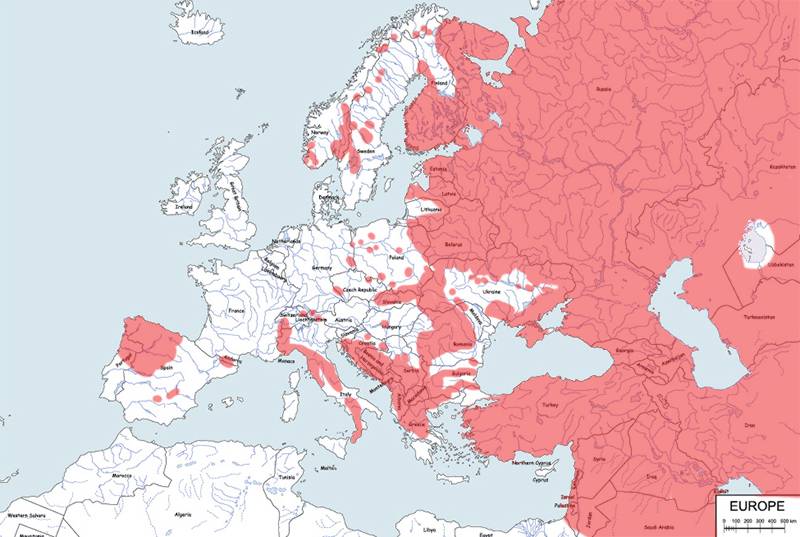 “Where the wolf runs, the forest grows ", says a Russian proverb. Would the wolf still live in our forests?, there would be fewer deer and deer, but the forest could of course grow. In addition, he would also get a touch of adventure back, which we all lack in our well-ordered world. Just imagine, what an experience it would be, to hear wolves howling again in our forests on a cold winter night or to come across a nursery of puppies in summer!
“Where the wolf runs, the forest grows ", says a Russian proverb. Would the wolf still live in our forests?, there would be fewer deer and deer, but the forest could of course grow. In addition, he would also get a touch of adventure back, which we all lack in our well-ordered world. Just imagine, what an experience it would be, to hear wolves howling again in our forests on a cold winter night or to come across a nursery of puppies in summer!
Of course the wolves won't eat us,when they come back. From old experience they are far too afraid of people for that. Because they are so shy, the wolves prefer a life in the deep forest to that in the open countryside. That's how you would them, if you're lucky, only see them scurrying by from afar. They would hardly attack the cattle either, because our cows, Horses and sheep are not sent to graze in the forest as they used to be, but almost only kept in paddocks close to the farm or in stables.
How nice would it be, when in the wooded areas, where the wolf would live again, lynx and bear could also leave their mark! That is why attempts are being made here and there to reintroduce the lynx. You're still thinking about the bear, where he could live and how to get there again. But with the wolf you don't have to do anything: He comes all by himself.
But do people really want that?? Many can put up with the big bear, because he is so round and clumsy. And yet he is the most dangerous of the three. On the other hand, the completely harmless little lynx still frightens many people. And then the wolf!
Then there are the shepherds, who rightly have to reckon with it, that in remote areas some sheep are killed and are therefore opposed to the return of the wolf. That is understandable, even if tests in Sweden and Italy have shown, that electric fences, as is usual with us, are excellent protection against wolves. Did they get hit once?, From now on, avoid every fence and especially the animals behind it.
Finally, there are the hunters, who fear for "their" game. But deer and stag belong to nobody and therefore nobody has the right, claim the game for yourself. Yet it is the hunter, who decides about it, whether the wolf – and also the bear and the lynx – live with us or not. Because he is literally sitting on the lever, on the trigger of his gun. Does he keep his finger straight?, as required by the law protecting these animals, the prey have a chance. If he ignores it, he shoots, none of the three will make it.
Possible habitats in Europe – Als zukünftiger Lebensraum für Wölfe kommen bei uns nur große geschlossene Waldgebiete in Frage, like they still do in Brandenburg, in the low mountain ranges and in the Alps. The Bavarian Forest alone is over 2000 square kilometers the largest contiguous forest area in Central Europe. With the Bohemian Forest in the Czech Republic and the Waldviertel in Austria as well as with the Fichtel, the ore- and the Giant Mountains together would result in a sufficiently large habitat for a few packs of wolves.
Via the Carpathians they would be connected to today's wolf populations in Eastern Europe and via the Alps to those in France, Italy and the former Yugoslavia down to Greece.
The arrows show the proliferation of wolves in Europe today. Favorite goals are big, closed forests with lots of game, as they are typical for central Sweden or here in the low mountain ranges and the Alps.